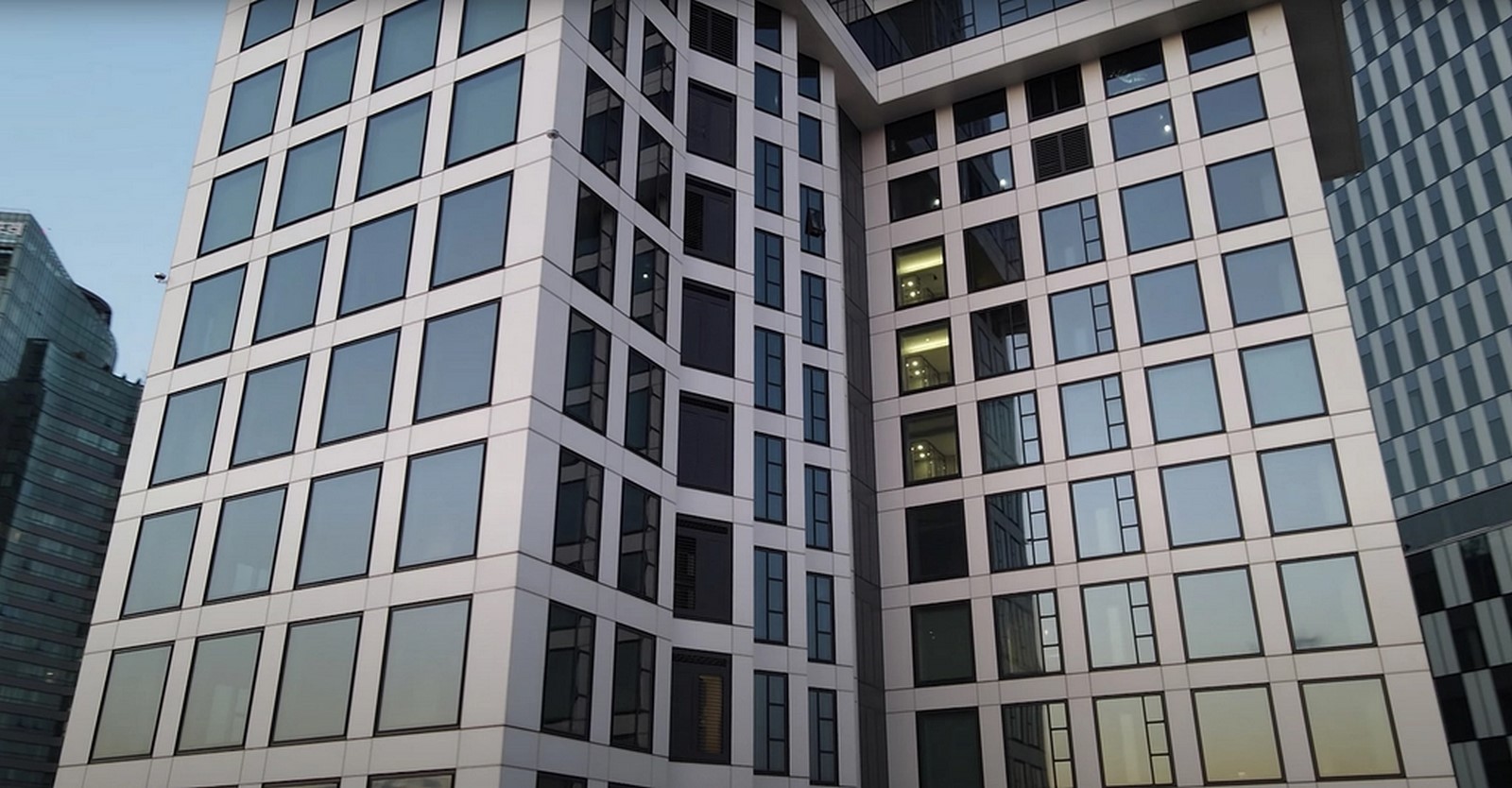The Acro Forest Skyscraper, situated adjacent to Seoul Forest Park, stands as a testament to modern architectural finesse. Comprising three sleek towers in black-and-white hues, this structure provides a serene escape amidst the bustling cityscape of Seoul. Anchored by a retail arcade at its base, the skyscraper integrates seamlessly with the urban fabric while offering convenient amenities to residents and visitors alike. Its strategic location grants easy accessibility to major downtown centers, making it a coveted address for professionals in Seoul. The residential towers boast a distinctive aesthetic, clad in Grespania’s Coverlam white porcelain tiles arranged in a vertical grid, adding a touch of sophistication to the skyline.

Design Philosophy and Features
Residential and Office Spaces
Designed by Ratio Design, the Acro Seoul Forest apartments redefine luxury living and workspaces. The towers feature a unique T-shape design, enhancing the panoramic views with mullion-free windows that offer a sweeping 270° outlook. This layout allows for maximum customization of interior spaces, with columns strategically positioned at the perimeter to strike a perfect balance between openness and privacy.
Ventilated Facade with Coverlam Tiles
The facade of the Acro Forest Skyscraper exemplifies modernity and functionality with Coverlam porcelain tiles. These tiles, characterized by their minimal thickness, are lightweight yet structurally robust, making them ideal for ventilated facades. Grespania’s innovative H&CTiles treatment further enhances their performance by combating pollution and ensuring a self-cleaning mechanism, thanks to the hydrophilic surface that repels dirt particles.
Key Features of Coverlam Porcelain Tiles
- Structural Reinforcement: Glass fiber mesh adds mechanical strength.
- Versatile Options: Available in various shapes and sizes.
- Ease of Handling: Reduced thickness simplifies cutting and handling, lowering logistical costs.
- Durability: Resistant to bending, UV light, chemicals, wear, fire, and frost.
- Environmental Sustainability: Recyclable and manufactured with eco-friendly processes.
- Lightweight: Weighing only 7.8 kg/m2 (3.5mm) and 14 kg/m2 (5.6mm), Coverlam facilitates faster installation and cost savings.
Project Specifications
- Location: Seoul, Korea
- Architect: Ratio Design
- Interior Design: Heerim
- Products Used: Coverlam Basic Blanco, Coverlam Basic Negro, Coverlam Oxido Marfil + H&CTiles
- Application: Walls, Facades, Floors
- Format: Tiles
- Properties: Energy Efficiency, UV Protection, Anti-Corrosion, Antibacterial
In essence, the use of Coverlam tiles at the Acro Forest Skyscraper not only elevates its aesthetic appeal but also embodies a commitment to functionality, sustainability, and innovation in modern construction practices.